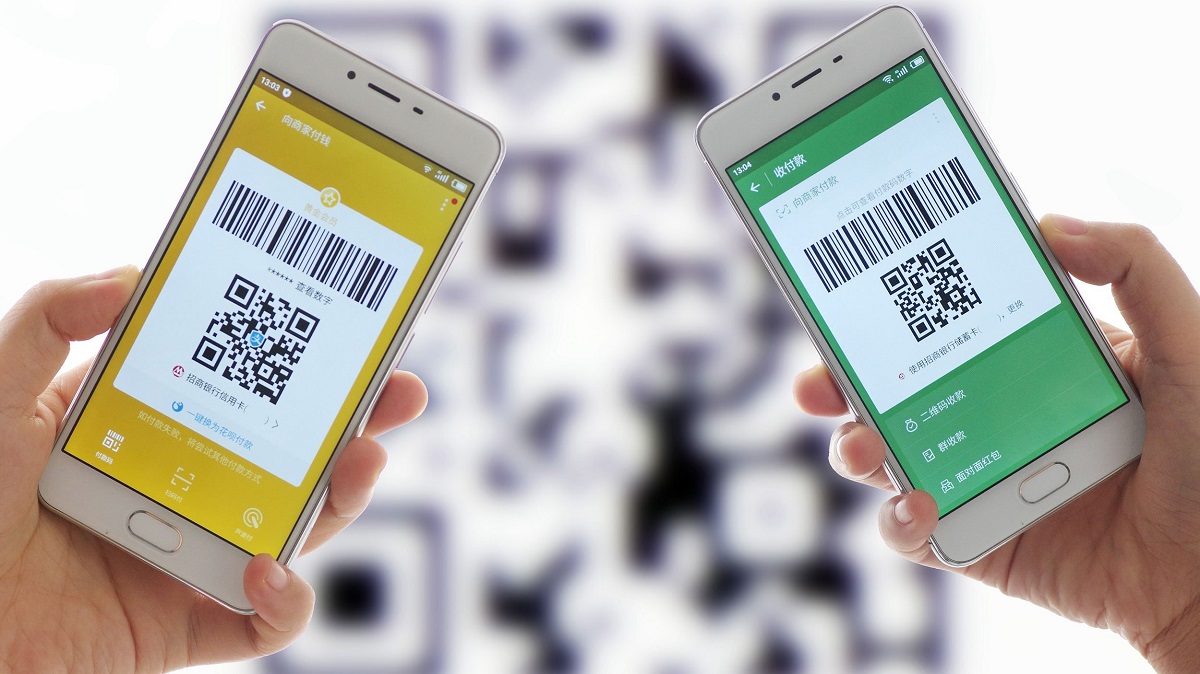Introduction
In recent years, China has experienced a remarkable transformation in the way its citizens make payments. Gone are the days of relying on cash and cards – today, mobile payment platforms dominate the market. With the rise of AliPay and WeChat Pay, China is well on its way to becoming a cashless society. This shift towards digital payments has not only brought convenience to millions of Chinese consumers, but it has also revolutionized the country’s economy and paved the way for a host of new business opportunities.
The rapid adoption of mobile payments in China can be attributed to a number of factors. Firstly, the widespread use of smartphones has made it easier than ever for people to make payments on the go. With just a few taps on their mobile devices, consumers can pay for groceries, dine at restaurants, hail a ride, or even split bills with friends. The convenience and simplicity of mobile payments have resonated with Chinese consumers, leading to a surge in adoption.
Additionally, AliPay and WeChat Pay have emerged as dominant players in the Chinese mobile payment market, accounting for a significant majority of transactions. AliPay, owned by the tech giant Alibaba, boasts an extensive user base and is accepted at millions of merchants across the country. WeChat Pay, integrated into the popular social media app WeChat, has gained widespread popularity for its seamless payment experience and integration with other services. The competition between these two platforms has fueled innovation and provided users with a wide range of features and benefits.
There are numerous advantages to transitioning to a cashless society. One of the most significant benefits is increased efficiency. With cashless payments, transactions can be completed in a matter of seconds, saving both time and effort. This streamlined process is particularly beneficial in high-volume environments such as retail stores, restaurants, and transportation hubs. Cashless payments also offer a higher level of security, as there is no risk of theft or loss associated with physical currency. Furthermore, digital payments allow for easier tracking and monitoring of expenses, enabling individuals and businesses to better manage their finances.
The Rise of Mobile Payments in China
Over the past decade, China has experienced a remarkable surge in mobile payment adoption, revolutionizing the way people make transactions. This meteoric rise can be attributed to factors such as the rapid proliferation of smartphones and the convenience offered by mobile payment platforms like AliPay and WeChat Pay.
One of the key drivers behind the widespread adoption of mobile payments in China is the country’s highly developed mobile infrastructure. With an estimated 1.6 billion mobile phone users, China has one of the largest mobile markets in the world. This extensive reach has laid the foundation for the rapid growth of mobile payments, making it accessible to a large portion of the population.
AliPay, launched by Alibaba in 2004 as an online payment platform, quickly transformed into one of the leading mobile payment services in China. The platform’s success can be attributed to its early adoption of QR code technology, allowing users to make payments by simply scanning a QR code. This user-friendly approach, combined with Alibaba’s dominant presence in e-commerce, facilitated AliPay’s widespread acceptance and popularity among merchants and consumers alike.
WeChat Pay, integrated into the widely used messaging app WeChat, further accelerated the rise of mobile payments in China. With over 1.2 billion monthly active users, WeChat has become an integral part of Chinese consumers’ daily lives, offering a wide range of services beyond messaging, including mobile payments. WeChat Pay leverages the app’s extensive user base, making it incredibly convenient for users to make payments within the app’s ecosystem. This seamless integration, coupled with WeChat’s powerful social sharing features, has contributed to WeChat Pay’s exponential growth and solidified its position in the Chinese mobile payment market.
The convenience offered by mobile payments has also played a significant role in driving their adoption in China. With just a few taps on their smartphones, users can conveniently make payments for a wide range of services and products. Whether it’s paying for a meal at a restaurant, purchasing groceries, or even donating to charitable causes, mobile payments have become the go-to method for many Chinese consumers.
Beyond convenience, mobile payments have also been embraced as a way to enhance social interactions and simplify everyday life. For instance, it is now common for friends and family members to conveniently split bills using mobile payment apps. This seamless experience not only saves time but also eliminates the need for individuals to carry cash or hunt for an ATM.
The rise of mobile payments in China has undoubtedly transformed the way financial transactions are conducted. As cash and card transactions take a backseat, mobile payments have become an integral part of daily life for millions of Chinese consumers. The convenience, ease of use, and widespread acceptance of platforms like AliPay and WeChat Pay have made mobile payments the preferred way to pay in China’s increasingly digital society.
The Dominance of AliPay and WeChat Pay
When it comes to mobile payments in China, two dominant players have emerged and revolutionized the landscape: AliPay and WeChat Pay. These two platforms have achieved remarkable success, capturing a significant market share and becoming an integral part of Chinese consumers’ lives.
AliPay, owned by the tech giant Alibaba, was launched in 2004 and initially served as an online payment solution. However, it quickly transitioned into a mobile payment platform, capitalizing on the growing popularity of smartphones in China. Today, AliPay boasts a massive user base and is widely accepted at millions of merchants across the country, ranging from small street vendors to large multinational retailers.
One of the key factors behind AliPay’s dominance is its early adoption of QR code technology. By embracing QR codes as a payment method, AliPay enabled users to make seamless payments by simply scanning codes displayed by merchants. This user-friendly approach significantly contributed to AliPay’s widespread acceptance, as consumers found it convenient and easy to use.
WeChat Pay, on the other hand, is integrated into the immensely popular social media app WeChat, which boasts over 1.2 billion monthly active users. WeChat has become an essential part of daily life in China, offering far more than just messaging. With features like social networking, media sharing, and e-commerce, WeChat has created an ecosystem where users can accomplish a wide range of tasks, including mobile payments.
WeChat Pay leverages the vast user base of WeChat to create a seamless payment experience. Users can connect their bank accounts to WeChat and make payments to individuals and businesses within the app. This integration with other services within the WeChat ecosystem has made WeChat Pay a go-to choice for many Chinese consumers.
The rivalry between AliPay and WeChat Pay has been a driving force behind the rapid expansion of mobile payments in China. Both platforms continually innovate and introduce new features to attract and retain users. Some of these features include the ability to pay utility bills, book appointments, purchase movie tickets, and even invest in financial products, further solidifying their position as indispensable tools for everyday life in China.
It’s worth noting that while AliPay and WeChat Pay dominate the market, they cater to slightly different user demographics and preferences. AliPay tends to be more popular among users in urban areas and is widely accepted by merchants, particularly in retail and hospitality sectors. On the other hand, WeChat Pay is favored by younger users and is often used for peer-to-peer transactions and interactions within social circles.
The success of AliPay and WeChat Pay has not only transformed the mobile payment industry but also disrupted traditional banking and financial institutions. With their user-friendly interfaces, extensive features, and widespread acceptance, these platforms have become more than just payment solutions – they have become lifestyle platforms that cater to the various needs of Chinese consumers.
The Advantages of Going Cashless
The transition towards a cashless society has numerous advantages that are driving the adoption of mobile payments in China. As consumers and businesses increasingly embrace digital transactions, they are realizing the benefits that come with going cashless.
First and foremost, one of the major advantages of going cashless is the enhanced convenience it offers. With mobile payments, transactions can be conducted swiftly and seamlessly, eliminating the need to carry physical cash or search for ATMs. Whether it’s paying for groceries, dining out, or shopping online, the ease and speed of mobile payments make everyday transactions more efficient and hassle-free.
Security is another significant advantage of going cashless. Carrying large amounts of cash always poses a risk of theft or loss. With mobile payments, the risk of physical theft is eliminated, as transactions are encrypted and protected by robust security measures. Additionally, users are provided with features like biometric authentication, passcodes, and transaction notifications, adding an extra layer of security to digital payments.
Furthermore, going cashless allows for greater transparency and better financial management. Digital payments leave a digital trail, making it easier for individuals and businesses to track their expenses and transactions. With detailed transaction history accessible at their fingertips, users can gain a clearer understanding of their spending patterns and make more informed financial decisions. This transparency also helps in combating fraud and tax evasion, as all transactions leave a digital record.
Cashless payments also offer benefits in terms of cost-effectiveness and efficiency for both businesses and consumers. For businesses, accepting digital payments eliminates the need for personnel to handle cash, reduces the risk of cash handling errors, and minimizes the costs associated with securing cash. Additionally, cashless transactions can be processed faster, allowing businesses to serve more customers in less time. For consumers, mobile payments often come with various incentives, such as discounts, loyalty rewards, and cashback offers, making digital transactions economically advantageous.
Another advantage of going cashless is the positive impact on the environment. By reducing the reliance on physical currency, we can lower the demand for paper and metal used in the production of money. This reduction in cash circulation ultimately leads to decreased deforestation, energy consumption, and greenhouse gas emissions associated with the production and transportation of physical currency.
Lastly, the shift towards a cashless society encourages innovation and promotes economic growth. Mobile payment platforms constantly innovate and introduce new features and services, adding value for both consumers and businesses. The growth of the mobile payment industry also creates new job opportunities and stimulates technological advancements in related fields, contributing to overall economic development.
The Challenges of a Cashless Society
While the transition to a cashless society offers many benefits, it is not without its challenges. As more and more transactions move away from physical cash and towards digital payments, certain obstacles need to be addressed to ensure a smooth transition and to accommodate the various needs of individuals and businesses.
One of the primary challenges of a cashless society is the issue of financial inclusion. While mobile payments are gaining popularity in China, some segments of the population, particularly the elderly and those in rural areas, may find it difficult to adapt to digital transactions. Limited access to smartphones, lack of technological literacy, and unreliable internet connections in certain regions can hinder the adoption of mobile payments and exclude those who are not familiar with or have limited access to digital technologies.
Another challenge lies in the potential for an increased vulnerability to cyber threats and fraud. As digital transactions become the norm, the risk of data breaches, hacking, and identity theft rises. It becomes crucial to implement robust security measures and educate users about best practices for protecting their personal and financial information. Additionally, it is essential for mobile payment platforms to invest in advanced encryption technologies and regularly update security protocols to stay ahead of evolving cyber threats.
Interoperability and compatibility of various mobile payment platforms can also be a challenge. With multiple mobile payment apps available in the market, it is important to establish a standardized system that allows for seamless transactions between different platforms. Enhancing interoperability will ensure that consumers and businesses can make and accept payments regardless of the specific mobile payment app they use, promoting convenience and ease of use.
The potential for disruptions in payment systems is another challenge to consider. In the event of a power outage, internet connectivity issues, or system failures, the reliance on digital payments can pose difficulties. It is essential to have contingency plans in place to ensure that alternative payment methods, such as cash or offline transaction options, are available during such disruptions to avoid inconveniencing consumers and businesses.
Moreover, a cashless society raises concerns regarding privacy and data protection. With every digital transaction, a wealth of personal and financial data is collected and stored. It is crucial to establish stringent regulations and guidelines regarding the collection, use, and sharing of this data to safeguard individuals’ privacy rights and prevent misuse or unauthorized access to sensitive information.
Lastly, the transition to a cashless society may lead to job displacement in certain sectors. With the automation of payment processes, job roles that were traditionally involved in cash handling may become obsolete. It is important to address this challenge by providing training and support to those whose jobs are impacted, ensuring a smooth transition to new employment opportunities.
While these challenges exist, they can be mitigated through proactive measures, collaboration between stakeholders, and continuous innovation. By addressing these challenges, a cashless society can deliver its promised benefits while ensuring inclusivity, security, and convenience for all.
Government Initiatives for a Cashless China
The Chinese government has been proactive in promoting and facilitating the transition towards a cashless society. Recognizing the numerous benefits and opportunities offered by mobile payments, the government has implemented various initiatives to encourage the adoption of digital transactions and create an ecosystem conducive to a cashless economy.
One of the key government initiatives is the encouragement of QR code-based payments. The use of QR codes has played a significant role in the rapid adoption of mobile payments in China. The government has pushed for the widespread acceptance of QR code payments by launching campaigns and providing incentives for merchants to adopt QR code readers. This initiative has significantly contributed to the acceptance and popularity of platforms like AliPay and WeChat Pay.
The Chinese government has also taken steps to address the issue of financial inclusion. To ensure that the advantages of mobile payments are accessible to all citizens, particularly the elderly and those in rural areas, the government has launched educational programs and provided training to promote digital literacy. Additionally, efforts are being made to improve internet connectivity in rural areas to ensure reliable access to mobile payment services.
In order to promote interoperability and create a standardized system for mobile payments, the government has initiated projects to develop a unified mobile payment platform. This platform aims to facilitate seamless transactions between different mobile payment apps, ensuring convenience for consumers and encouraging the acceptance of a wide range of payment options by businesses.
The government has also taken measures to ensure the security and privacy of digital transactions. Regulations and guidelines have been established to protect consumer data and prevent fraudulent activities. Mobile payment platforms are required to comply with stringent data protection protocols, and regular audits are conducted to ensure compliance with security standards.
Furthermore, the Chinese government has incentivized the use of mobile payments through various initiatives. These incentives include discounts, cashback rewards, and loyalty programs for consumers who make digital transactions. Such incentives not only drive adoption but also encourage the shift from cash-based transactions to mobile payments.
Government collaborations with financial institutions and technology companies have played a crucial role in advancing the cashless agenda. By partnering with key stakeholders, the Chinese government has been able to leverage their expertise and resources to drive innovation and expansion in the mobile payment industry. These collaborations have resulted in the development of new payment solutions and enhanced security measures, further solidifying China’s position as a leader in the cashless revolution.
Overall, the government’s initiatives have played a vital role in shaping China’s journey towards a cashless society. Through educational programs, infrastructure development, security regulations, and collaborations, the government has created an ecosystem that supports and promotes the widespread adoption of mobile payments, ensuring that the advantages of a cashless economy are accessible to all citizens.
The Implications for Businesses and Consumers
The transition towards a cashless society in China carries significant implications for both businesses and consumers, impacting various aspects of their daily lives and financial interactions.
For businesses, embracing mobile payments opens up a world of opportunities. By accepting digital transactions, businesses can tap into a larger customer base, including tech-savvy millennials and Chinese tourists who prefer mobile payments. This expanded customer reach can drive sales and revenue growth. Additionally, mobile payments offer businesses the advantage of faster and more efficient transactions. With streamlined payment processes, businesses can serve customers more quickly, reducing waiting times and improving overall customer satisfaction.
Furthermore, mobile payment platforms often provide valuable data and analytics to businesses. With access to transaction history and customer preferences, businesses can gain insights into consumer behavior, enabling them to tailor marketing strategies and personalized offers. This data-driven approach can lead to targeted marketing campaigns, better customer segmentation, and improved customer retention.
For consumers, the implications of a cashless society are equally significant. Mobile payments offer convenience, allowing consumers to make transactions swiftly and securely with just a few taps on their smartphones. Whether it’s purchasing goods, paying bills, or transferring money to friends and family, mobile payments provide a seamless experience that simplifies everyday financial interactions.
Mobile payment platforms also offer additional features and services that enhance the consumer experience. It is common for mobile payment apps to provide loyalty programs, discounts, and incentives, encouraging repeat usage and rewarding customer loyalty. Consumers can also enjoy the convenience of integrating various services within a single app, such as ordering food, booking transportation, or accessing entertainment options, making mobile payments an essential tool for everyday life.
Another implication of a cashless society for consumers is the potential for financial empowerment. With digital transactions, individuals can easily track and monitor their expenses, enabling better financial management and budgeting. This increased visibility and control over personal finances can lead to improved financial well-being and responsible spending habits.
However, the transition to a cashless society can also present some challenges for both businesses and consumers. Businesses may face initial implementation costs and technology requirements to adopt mobile payment solutions. They may need to upgrade their point-of-sale systems, train employees, and ensure network connectivity for smooth mobile payment transactions. For consumers, there may be a learning curve in adapting to new payment methods and ensuring awareness of security measures to protect against potential fraud.
Nevertheless, the overall implications for businesses and consumers in a cashless society are overwhelmingly positive. Mobile payments offer businesses the opportunity to expand their customer base, increase efficiency, and gain valuable insights. For consumers, mobile payments provide convenience, security, and access to a wide range of additional services within a single app. As the cashless trend continues to grow, businesses and consumers who embrace mobile payments are likely to experience enhanced financial interactions and improved experiences.
The Future of Cash in China
As China steadily moves towards becoming a cashless society, the future of physical currency in the country is under scrutiny. While mobile payments have gained significant traction and become the preferred method of transaction for many, the complete elimination of cash is unlikely in the near future.
Cash still plays a vital role in certain segments of society, particularly among the elderly and in rural areas where access to smartphones and reliable internet connectivity may be limited. Cash also remains a fallback option during times of disruption, such as power outages or system failures, ensuring that transactions can still occur when digital systems are temporarily unavailable.
However, the influence and usage of physical currency in China are expected to diminish further as mobile payments consolidate their dominance. The convenience, speed, and security offered by mobile payment platforms like AliPay and WeChat Pay continue to attract more users, gradually reducing the reliance on cash.
Technological advancements will also contribute to the decline of cash usage. The expansion of contactless payment methods, such as near-field communication (NFC) and biometric-based payments, will further streamline transactions and eliminate the need for physical currency. Emerging technologies like facial recognition and voice recognition are already being integrated into payment systems, providing a seamless and secure payment experience.
Government initiatives will also shape the future of cash in China. As the government continues to push for the adoption of mobile payments and implement policies to promote financial inclusion, the usage of cash is likely to decrease further. Initiatives such as the development of a unified mobile payment platform, educational programs to enhance digital literacy, and infrastructure improvements in rural areas will all contribute to the growth of mobile payments and the diminishing role of physical currency.
The ongoing COVID-19 pandemic has also accelerated the shift towards a cashless society. Concerns about the potential transmission of the virus through physical currency have prompted individuals and businesses to embrace contactless payment options. This increased preference for touchless transactions has created a fertile ground for mobile payment platforms to thrive, further propelling the decline of cash in China.
However, it is important to note that the elimination of cash entirely poses its own set of challenges. Privacy concerns, the digital divide, and the need for robust cyber security measures are all factors that need to be addressed in a cashless society. Governments, businesses, and technology providers will need to work together to ensure that the transition is inclusive, secure, and convenient for all individuals and businesses.
While physical currency may not disappear entirely, the future of cash in China will undoubtedly be overshadowed by the dominance of mobile payments. The continued innovations in technology, government initiatives, and changing consumer behavior will shape a financial landscape where digital transactions are the norm, gradually relegating physical currency to a secondary role.
Conclusion
The journey towards a cashless society in China has witnessed tremendous progress, driven by the rapid adoption of mobile payments and the dominance of platforms like AliPay and WeChat Pay. The advantages of going cashless, including convenience, security, efficiency, and transparency, have resonated with both businesses and consumers, paving the way for a new era of digital transactions.
The Chinese government has played a pivotal role in promoting a cashless society through various initiatives, including the encouragement of QR code payments, efforts to enhance financial inclusion, and the establishment of security regulations. These initiatives have fostered an ecosystem that supports mobile payments and facilitates widespread acceptance across a broad spectrum of merchants.
The implications of a cashless society for businesses are significant, offering opportunities for expansion, increased efficiency, and improved customer insights. Consumers, on the other hand, benefit from the convenience, additional services, and financial empowerment that mobile payments provide.
Despite the remarkable progress towards a cashless society, physical currency will not vanish entirely in the foreseeable future. Cash will still hold relevance in certain contexts, serving as a fallback option during disruptions and catering to specific segments of the population. However, as technology continues to advance, and with ongoing government initiatives, the role of cash is expected to diminish further.
As we look ahead, the future of cash in China will be shaped by technological advancements, government policies, and changing consumer behavior. The continued growth and innovation in mobile payment platforms, the expansion of contactless technologies, and the evolution of regulations and security measures will all contribute to the ongoing transformation of the financial landscape.
While there are challenges to overcome, such as financial inclusion, cybersecurity, and privacy concerns, the increasing adoption of mobile payments in China showcases the country’s commitment to embracing digital transformation. As businesses and consumers become more accustomed to the benefits of mobile payments, the transition towards a cashless society will likely continue, creating new opportunities, enhancing financial interactions, and shaping a future where digital transactions reign supreme.

























